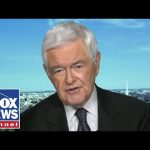In the bustling city of Tel Aviv, significant developments unfold as Israel and Gaza find themselves on the brink of a new agreement. The Israeli government has given its nod to a peace plan initiated by the U.S. President, signaling a ceasefire set to take effect. This agreement outlines the withdrawal of Israeli Defense Forces, leaving around 53% of Gaza still under Israeli control—a curious setup, indeed. One wonders whether the remaining control is going to be a future point of contention or merely a scheduling quirk in the “Guide to the Perfect Ceasefire.” Meanwhile, suspense hangs in the air as the clock ticks down with Hamas given 72 hours to release 48 hostages, both live and deceased. A macabre countdown, if ever there was one.
President Trump plans to make a grand appearance in the region, basking in what some claim is diplomatic triumph. One could almost imagine him relishing in his smartphone’s glow, glorying in the Tweets that will surely follow his arrival. He’s been invited to address the Israeli parliament—a nod to what many see as his “moral superpower” guiding America’s foreign policy. Indeed, it’s quite the spectacle as accolades are tossed around like confetti at a victory parade. Yet, amidst all of these grand plans, a poignant shadow looms over this orchestration: the tragic loss of a young Israeli soldier, just hours before the ceasefire. One can only hope that the sacrifices made can eventually give birth to peace.
On the ground, Israeli soldiers are held up as paragons of heroism, enduring the hardships of Gaza with a resolute dedication to bringing home compatriots held hostage. The narrative spins an image of unwavering determination—almost cinematic in its portrayal. It’s as if every soldier carries upon their shoulders the weight of an entire nation’s hopes and expectations. This ceasefire agreement, if actually accomplished, has been touted as a notable victory for Israel, signaling a significant setback for Hamas. Perhaps, some mused, Hamas might finally grasp that environmental kidnapping isn’t the strategic triumph they envisioned, but rather an eventual path to their misfortune.
As talks progress, skepticism remains an ever-present guest at the table. There’s a wariness of trusting Hamas, likened to betting on a bicycle made entirely of gelato in the middle of summer. Many eye the developments with cautious optimism, aware that agreements with the word “terror” are often as brittle as porcelain and just as challenging to keep intact. Amidst these tense negations, concerns rise over logistical nightmares looming on the horizon. The promise of future prisoner exchanges adds another layer to the already intricate puzzle that the agreement represents.
The world watches with bated breath as discussions unfold, curious to see if this precarious peace will hold. While some have grand visions of rebuilding and revitalizing Gaza, the undercurrent of complexity makes one wonder if simplifying this dream is akin to solving the Gordian Knot with one hand tied behind one’s back. Yet, another surprising subplot emerges—the peculiar omission of President Trump from receiving the Nobel Peace Prize. Instead, some propose creating a completely new peace award in his name—no doubt worthy of some vibrant debates about what category it should feature in the annual yearbook. As history unfolds, the players involved continue their dance on this delicate diplomatic stage, hoping their next steps do not end in a diplomatic shuffle off the world’s radar.




